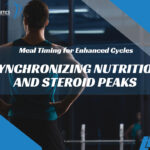Introduction: The Overlooked Role of Sodium in Steroid Performance
When fitness enthusiasts discuss nutrition during steroid cycles, the spotlight often shines on protein, creatine, and testosterone support. But one essential mineral rarely gets the attention it deserves — sodium. In the context of sodium intakes, this electrolyte is not the enemy of fitness, despite its reputation for causing water retention. In fact, sodium is a cornerstone for hydration balance, muscle contraction, nerve signaling, and endurance performance.
For athletes using anabolic steroids, sodium regulation becomes even more critical. Steroids can alter fluid retention, kidney function, and electrolyte metabolism, making it crucial to understand how to manage sodium intake for maximum strength, vascularity, and recovery.
At Bio Genetics USA, we believe peak performance comes from balance — not restriction. This article will help you master sodium control during cycles, ensuring your results are lean, strong, and sustainable. For a deeper understanding of supporting minerals, check out this guide on calcium and steroids.
The Science: Why Sodium Matters During Steroid Cycles
When most athletes think about performance enhancement, sodium rarely makes the list — yet it’s one of the most powerful regulators of hydration, strength, and recovery. Sodium is far more than a simple seasoning; it’s an electrolyte essential for muscle contractions, nerve transmission, and fluid balance. During steroid cycles, these functions become even more critical because anabolic compounds alter how your body handles water, electrolytes, and hormones.
Anabolic steroids accelerate protein synthesis, nitrogen retention, and glycogen storage, which in turn increases water retention inside muscle cells. That’s why understanding proper sodium intakes is vital — too little sodium can flatten your muscles and sap strength, while too much can lead to bloating or blood pressure issues. Finding the right balance keeps your muscles hydrated, vascular, and powerful.
1. Fluid Balance and Muscle Fullness
Steroid use changes how the body manages water on a cellular level. Anabolic compounds promote intracellular hydration, giving muscles that dense, “pumped” look athletes love. Sodium plays a key role here, partnering with potassium to regulate fluid shifts in and out of cells.
However, when sodium intake drops too low, the body compensates by holding water outside the cells — a condition that leads to puffiness or the dreaded “smooth” physique. Conversely, balanced sodium levels help retain water where it belongs — inside muscle cells — which supports:
- Increased muscle fullness and density
- Improved contractile strength during training
- Better joint lubrication and mobility
Athletes who restrict sodium too aggressively often experience flat, weak muscles, electrolyte imbalances, and reduced pump quality.
2. Nerve Signaling and Muscle Contraction
Sodium is also the spark that drives every muscle contraction. It controls the electrical impulses that travel between the brain and muscles. When sodium levels are inadequate, these impulses slow down or misfire, leading to:
- Early fatigue during workouts
- Cramping or “locking up” during intense lifts
- Poor mind-muscle connection
On the flip side, excess sodium can cause high blood pressure and unnecessary fluid retention if it’s not balanced with potassium and magnesium. These minerals work synergistically — sodium triggers contraction, while potassium helps the muscle relax, and magnesium stabilizes both actions.
In other words, performance isn’t just about how much sodium you take, but how balanced your entire electrolyte system is. Maintaining this triad keeps your muscles firing efficiently and prevents over-stimulation of the cardiovascular system.
3. Steroid-Induced Water Retention and Electrolyte Shifts
Certain anabolic compounds — including testosterone enanthate, dianabol, and nandrolone — stimulate higher aldosterone production. This hormone tells the kidneys to hold onto sodium and water, which can lead to temporary bloating, swelling, or high blood pressure.
Left unmanaged, this can cause visible water retention, particularly in the face, hands, and ankles. However, when sodium and fluid levels are properly controlled, these effects can be mitigated without sacrificing strength or performance.
Here’s how to maintain balance:
- Monitor your sodium intake: Keep it between 1,500–2,300 mg per day, adjusting for sweat rate, training volume, and temperature.
- Increase potassium intake: Foods like bananas, avocados, sweet potatoes, and spinach help offset sodium’s water-retentive effects and support cardiovascular health.
- Hydrate intelligently: Don’t rely solely on water — use electrolyte-enhanced fluids that replace sodium and minerals lost through sweat to prevent dilutional hyponatremia (low blood sodium).
- Avoid extreme sodium swings: Sudden increases or decreases in intake can disrupt fluid equilibrium and lead to either dehydration or bloating.
Balanced sodium levels help maintain the tight, vascular look athletes strive for during cycles while supporting heart health and muscular performance.
The Key Takeaway
Proper sodium intakes during steroid cycles are not about cutting salt — they’re about precision and control. Sodium is the foundation of muscle hydration, nerve conductivity, and recovery efficiency. When paired with the right potassium-to-magnesium ratio and adequate hydration, sodium becomes a powerful ally in maximizing both strength and aesthetics.
At Bio Genetics USA, we emphasize evidence-based nutrition strategies that support your cycle safely and effectively. Managing your sodium intake isn’t about restriction — it’s about mastery. Balance it correctly, and you’ll unlock new levels of endurance, performance, and definition that last beyond your cycle.
How Sodium Impacts Performance on Steroid Cycles
Understanding how sodium affects physical performance is essential for anyone running anabolic cycles. Steroids amplify metabolic activity and muscle demand, which means your body’s requirement for electrolytes — especially sodium — increases dramatically. Sodium directly influences how strong you feel in the gym, how fast you recover afterward, and how effectively your body maintains hormonal balance. Managing sodium intakes properly can therefore be the difference between a powerful, vascular physique and one that feels sluggish, bloated, or depleted.
1. Strength and Endurance
Sodium is the master regulator of muscle excitability and hydration. It controls the electrical impulses that tell your muscles when to contract and relax. Without adequate sodium, the body cannot maintain stable nerve transmission or the optimal fluid environment within muscle tissue.
When you train hard — especially while enhanced — you lose sodium through sweat, and that loss directly affects your strength and endurance. Even a 2% reduction in hydration can cause noticeable drops in power output and reaction time. During steroid cycles, this problem can intensify because your body processes fluids and nutrients faster.
Proper sodium intake maintains:
- Plasma volume: Keeps blood thick enough to deliver oxygen and nutrients efficiently.
- Muscle hydration: Retains fluid inside cells, creating the full, pumped look that defines an anabolic state.
- Thermoregulation: Supports cooling during long workouts and high-intensity training.
When sodium levels drop too low, performance suffers immediately — you experience dehydration, dizziness, reduced muscle pump, and decreased endurance. On the other hand, maintaining balanced sodium intakes enhances muscular efficiency and allows you to train harder, longer, and safer.
2. Recovery and Nutrient Delivery
Recovery is where growth truly happens, and sodium plays a surprisingly large role in this process. It acts as a transport facilitator, helping nutrients like glucose, amino acids, and creatine move across cell membranes. In essence, sodium opens the “gateways” that allow your muscles to absorb what they need to repair and grow.
During a steroid cycle, this becomes even more critical. Enhanced protein synthesis and glycogen turnover mean your muscles are burning through nutrients at an accelerated pace. If sodium levels are insufficient, nutrient uptake slows — leading to sluggish recovery, reduced glycogen replenishment, and less effective protein synthesis.
Benefits of optimal sodium levels for recovery include:
- Faster post-workout muscle repair due to improved nutrient absorption.
- Enhanced creatine transport, increasing cellular ATP levels and strength output.
- Better hydration of muscle cells, which promotes anabolic signaling and limits catabolism.
In short, sodium ensures that the effort you put into your diet and supplements actually pays off. Without it, even high-quality nutrition can fail to deliver maximum benefit.
3. Hormonal and Cardiovascular Health
Steroid use significantly affects how the kidneys manage electrolytes. Compounds like testosterone and nandrolone alter the production of aldosterone, a hormone that tells your body how much sodium and water to retain. When sodium isn’t balanced properly, this delicate system can tilt in either direction — both of which harm performance.
- Too much sodium: Increases extracellular water retention, elevating blood pressure and straining the cardiovascular system. It can reduce endurance and cause visible bloating or swelling.
- Too little sodium: Causes dehydration, cramps, hormonal stress, and a drop in natural testosterone regulation. Low sodium can also increase cortisol, a catabolic hormone that works against muscle preservation.
The key is controlled moderation. Sodium levels should remain high enough to sustain nerve signaling, hydration, and recovery — but not so high that they promote excessive fluid retention or hypertension. Pairing sodium with potassium and magnesium creates a natural buffering system that stabilizes blood pressure and supports heart health throughout your cycle.
Athletes who achieve this balance often report improved vascularity, better endurance, and smoother post-cycle recovery, proving that sodium is not the enemy — it’s the key to internal stability during enhanced performance.
The Bottom Line
Sodium is one of the most misunderstood minerals in sports nutrition, especially among athletes using anabolic compounds. Rather than fearing salt, it’s crucial to master your sodium intake. Balanced sodium levels promote strength, hydration, recovery, and cardiovascular health — everything you need to perform at your peak during a cycle.
At Bio Genetics USA, we continue to educate athletes on the science behind performance and health synergy. When it comes to optimizing sodium intakes, precision is power. Knowing how to manage your electrolytes ensures that every workout, every rep, and every meal works toward your long-term performance goals — safely and effectively.
Sodium Ratios: Finding the Perfect Balance
Just as with calcium and magnesium, balance is everything when it comes to sodium. Here’s how it should look:
| Electrolyte | Primary Function | Ideal Range During Cycle | Best Food Sources |
| Sodium (Na) | Regulates fluid balance, muscle contraction | 1,500–2,300 mg/day | Sea salt, eggs, canned fish |
| Potassium (K) | Balances sodium, supports heart and nerve health | 3,000–4,700 mg/day | Bananas, spinach, avocados |
| Magnesium (Mg) | Calms nerves, prevents cramps | 300–400 mg/day | Almonds, dark chocolate, oats |
| Calcium (Ca) | Works with sodium for muscle contraction and bone health | 1,000–1,200 mg/day | Milk, sardines, kale |
Maintaining these ratios ensures your body stays hydrated, strong, and hormonally stable throughout the steroid cycle.
Common Mistakes in Managing Sodium During Steroid Cycles
- Cutting Sodium Too Aggressively: Many athletes mistakenly eliminate sodium to appear leaner, but this leads to flat muscles, fatigue, and cramping.
- Overloading with Processed Foods: Hidden sodium in packaged meals causes unpredictable water retention and high blood pressure.
- Ignoring Potassium Balance: Without potassium, sodium control is nearly impossible. Always include potassium-rich foods daily.
- Neglecting Hydration: Drinking too little or too much water both disrupts sodium balance — aim for 3–4 liters daily, adjusting for climate and training volume.
How to Manage Sodium Intakes Safely
Here are some practical, cycle-friendly strategies:
- Track Your Intake: Use apps or labels to monitor daily sodium levels.
- Prefer Natural Sources: Prioritize sea salt, mineral salts, or whole foods over processed sodium additives.
- Replenish After Sweating: Use electrolyte powders during long workouts to replace sodium lost through sweat.
- Support with Micronutrients: Include calcium, magnesium, and potassium — they help regulate sodium’s fluid effects.
- Monitor Your Body: Swelling in hands or ankles means sodium is too high; flat or weak muscles suggest it’s too low.
The Bio Genetics USA Perspective: Smart Performance Through Balance
At Bio Genetics USA, we don’t just focus on performance enhancement — we focus on body optimization. Sodium isn’t something to fear; it’s something to master. When used intelligently, sodium becomes a secret weapon for better hydration, vascularity, and endurance during steroid cycles.
The key is balance — not extremes. Combined with proper electrolyte management, hormonal support, and structured cycle planning, you can train harder, recover faster, and maintain optimal health.
For more nutritional and recovery strategies, explore our full lineup of supplements and performance guides at Bio Genetics USA Shop.






